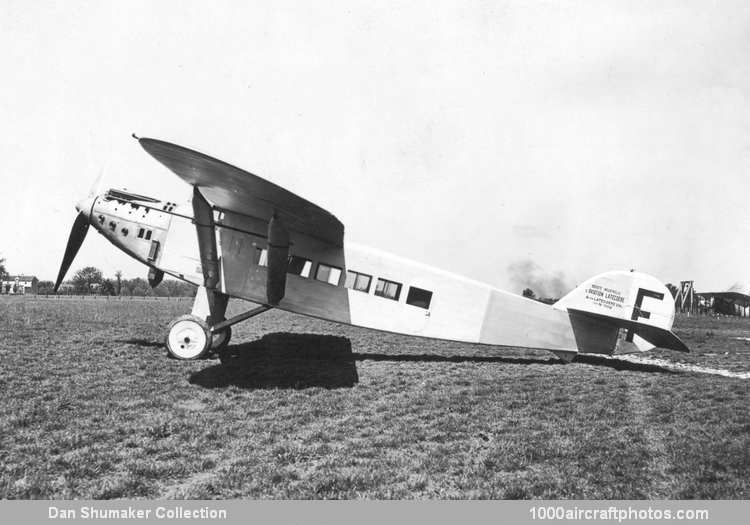07/31/2018. Remarks by Johan Visschedijk: "Between 1929 and 1932, at least 46 of these Latécoère 28s were built, both in landplane and floatplane versions, most were powered by a version of the Hispano-Suiza (H.S.) twelve-cylinder liquid-cooled V-engine. The constructor's numbers ran from 902 to 944 and from 961 to 963 and these Latécoère 28s worked between France and West Africa and on the routes in South America.
The first known example was the pictured 28.1 prototype, it had accommodation for eight passengers and was powered by a 500 hp H.S. 12Hbr. Of the 28.1 version 29 examples were built for the Aéropostale for use on the Toulouse-Casablanca line.
The 28.0 was similar to the 28.1, but was powered by a 500 hp Renault 12Jb, also a twelve-cylinder liquid-cooled V-engine. The sixteen aircraft built were also used by Aéropostale on the Toulouse-Casablanca line. It is possible that c/n 901 was the 28.0 prototype, at least fourteen of the 28.0 aircraft were modified to 28.1 standard.
The sole 28.2 was a two-seat mailplane, powered by a 650 hp H.S. 12Nbr.
The 28.3 was a three-seat twin-float mailplane, had increased wing area and was powered by a 600 hp H.S. 12Lbr engine; five were built.
One of these, flown by the famous Jean Mermoz, established a closed circuit distance record of 2,677.078 mls (4,308.340 km) on April 11-12, 1930. Another one, c/n 919, registered F-AJNQ and named Comte de la Vaulx, made the first experimental air mail flight from Toulouse to Rio de Janeiro. From Saint Louis, Senegal, to Natal, Brazil, the aircraft was flown by Jean Mermoz, accompanied by navigator Jean Dabry and radio-operator Leopold Gimié. The first non-stop commercial crossing of the South Atlantic, a stretch of ca. 1,975 mls (3,178 km), took 20 hr and 50 min on May 12-13, 1930. On July 9-10 the return flight was made, however, due to a total loss of oil pressure, the seaplane had to land 435 mls (700 km) off the African coast. Although the crew and mail could be saved, the aircraft was abandoned, as it was damaged and could not be towed.
The sole 28.3-1 was an eight-passenger version of the 28.3, powered by a 600 hp H.S. 12Lber.
The sole 28.4-1 eight-passenger was powered by a 700 hp Gnome & Rhône 14 Kbr fourteen-cylinder two-row radial engine.
The sole 28.5 was similar to the 28.3, but was fitted with the 650 hp H.S. 12Nb. This aircraft was delivered to the Aeronavale (Navy), named La Frégate and flown by Lieutenant de Vaisseau Paris, it set in 1930 nine world records for speed, duration and distance with loads of 500 kg (l,102 lb), 1,000 kg (2,204 lb) and 2,000 kg (4,409 lb).
The 28.6 was similar to the 28.3 but was fitted with the 650 hp H.S. 12Nb. Three aircraft were supplied to Aviacion Nacional Venezolana and, later, taken over by Linea Aeropostal Venezolana.
The 28.8 was a two-seat record aircraft built to try to regain the distance record. Derived from the 28.1 and powered by a 650 hp H.S. 12Nbr, it was first flown in July 1930. It was destroyed during testing on August 30, 1930, forcing pilot Jean Mermoz to bail out at 2,297 ft (700 m).
At least four Latécoère 28s went to Aeroposta Argentina, two others went to LAV, and Air France took over 29 Latécoère 28 landplanes and two floatplanes in 1933.
A 1933 Naval development was the Latécoère 290. A three-engine development for ten passengers was the Latécoère 350, but it did not go into service."
